Pola Day / Pola Night research
Pola day + pola night – high viscosity, neutral pH, tooth whitening gels for take home.
Performance
- Patel A., Louca C., Millar B. J., Colour change in-vitro using 6 whitening systems, Research Report, King’s College London Dental Institute, Denmark Hill Campus, London.
- Tsubura S., Yamaguchi R., Clinical evaluation of new bleaching product “Pola Night” on Japanese population, The Society of The Nippon Dental University, Odontology (2005) 93:52-55.
- Tsubura S., Efficacy of PolaNight on Tooth-whitening 24-months Post Treatment on Japanese, Brisbane 2006 IADR Abstract #2112, Nippon Dental University, Niigata, Japan.
- Alford A., The use of 10%, 16%, 22% Carbamide Peroxide and 3%, 7.5%, 9.5% Hydrogen Peroxide Materials for At-Home Vital Tooth Bleaching in Combination with Active and Passive Treatment Modalities for Control of Tooth Sensitivity and Gingival Irritation, London, 2004, unpublished paper.
- Tsubura S.; Clinical evaluation of three months nightguard-vital bleaching with tetracycline-stained teeth using Polanight 10% carbamide gel; Dept. of Biochem The Nippon Dental Univ. Niigata.
- Tsubura S.; Clinical evaluation of three months’ nightguard-vital bleaching with tetracycline-stained teeth using Polanight 10% carbamide gel: 2-year follow-up study; Dept. of Biochemistry, The Nippon Dental University School of Life Dentistry at Niigata, Odontology (2010) 98:134-138.
- Radz G, Latta M; Vital Bleaching- An Essential Adjunct to Modern Esthetic Dentistry; Product Spotlight, p42-48, Incisal Edge 2011.
- Brinker, S; Using Hydrogen Peroxide in Custom Trays to Restore Gingival Health; Contemporary Product Solutions 2016.
- A randomized clinical trial investigating three vital tooth bleaching protocols and associated efficacy, effectiveness and participants’ satisfaction. S Kothari, AA.Jum’ah, AR.Gray, K Lyons, M Yap, P Brunton. Journal of Dentistry, Vol.95, March 2020.
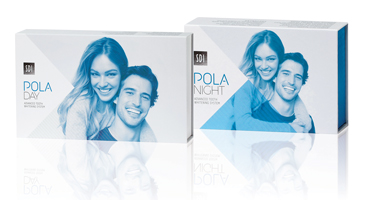
Performance
Patel A., Louca C., Millar B. J.; Colour change in-vitro using 6 whitening systems, Research Report, King’s College London Dental Institute, Denmark Hill Campus, London.
Aim: To compare immediate and longer-term colour change, on natural tooth colour in vitro, using 5 current tooth whitening techniques with blind matched control groups.
Method: A total of 100 human teeth of matched size were cleaned, stored in sterile deionised water at 4oC then randomly allocated to one of the 5 active treatment groups or 5 matched control groups. The active treatments were: 10% carbamide peroxide (Pola Night) x 60 min, 35% carbamide peroxide (Pola Zing) x 30 min or 35% hydrogen peroxide (Pola Office) treatment x 30 min activated by one of three sources of energy (diode laser, halogen light, and plasma arc curing light). Tooth colour was analysed with a colorimeter before and after treatment: immediate, 1 week and 9 months post bleaching designed to generate L* values. The change in colour was determined as ?L (the difference in the value of the colour ) for each tooth, then the mean differences were obtained for each group and compared. Tooth surface temperature was monitored.
Conclusion: This study suggests that 10% CP (Pola Night ) is an effective technique for tooth whitening and can offer significant benefits over alternative regimes.
Clinical performance
Tsubura S., Yamaguchi R.; Clinical evaluation of new bleaching product “Pola Night” on Japanese population, The Society of The Nippon Dental University, Odontology (2005) 93:52-55
Fifty-eight Japanese volunteers (16 males and 42 females), ranging from 18 to 47 were randomly selected from the patients visiting a private dental clinic. The mean age was 30.41. Pola Night 10% gel was the test material and Opalescence 10% carbamide gel was the control sample.
Pola Night seemed to have greater potential of improvement of esthetics on discoloured teeth for Japanese. It showed excellent results with regards to side effects. No irritation nor inflammation of gingiva was observed during the experimental period.
Clinical performance
Tsubura S.; Efficacy of PolaNight on Tooth-whitening 24-months Post Treatment on Japanese, Brisbane 2006 IADR Abstract #2112, Nippon Dental University, Niigata, Japan.
The purpose of this study is to compare the whitening efficacy of PolaNight (SDI Ltd, Australia) with that of a wildly used tooth-whitening product, Opalescence F (Ultradent, USA) at 24 months after treatment.
Both PolaNight and Opalescence were effective in the tooth-whitening. And PolaNight was more effective than Opalescence.
Clinical performance
Alford A.; The use of 10%, 16%, 22% Carbamide Peroxide and 3%, 7.5%, 9.5% Hydrogen Peroxide Materials for At-Home Vital Tooth Bleaching in Combination with Active and Passive Treatment Modalities for Control of Tooth Sensitivity and Gingival Irritation, London, 2004, unpublished paper.
At -Home Vital Tooth Bleaching (AHVTB) has been studied and used for many years now and has been found to be safe and effective in whitening patients teeth. It has also been shown that AHVTB does not have any detrimental long term effects on the teeth.
The main transient side effects are tooth sensitivity (TS) and gingival irritation (GI), gastric irritation and sore throat have also been noted at times. The side effects on average take 2-7 days to subside, most side effects though subside before the completion of the treatment. Sensitivity is in the form of a reversible pulpitis caused from the dentinal fluid flow and pulpal contact of the material without apparent harm to the pulp. The degree of sensitivity ranges from mostly mild to moderate with occasional severe sensitivity.
This study was designed to produce a protocol for the general practitioner that combines known treatment methods and concentrations of materials with known trends, so as to try and decrease the number of applications necessary by using higher concentrations of materials in an incremental approach, also combining the use of active and passive treatment modalities for side effects, so that the main side effects were kept at tolerable levels for the patient within normal ranges of experienced side effects form other literature. The patients were instructed on what to expect and how to treat there own symptoms with the materials given to them, so as to try and improve the outcome by giving the patient enough understanding to control their situation.
The study population were patients from private practice who had expressed an interest in whitening their teeth. Patients that had indicated on medical history forms that they had acatalasaemia or glucose-6-phosphate dehydrogenase deficiency (G6PD), were not included in the study population. The ages ranged from 25-65. There were 30 patients surveyed, of which 19 filled in their questionnaires properly.
The trend indicates that by incrementally increasing the concentrations of materials and by educating the patients to the active and passive treatment modalities available to the patient for the main side effects, of tooth sensitivity and gingival irritation, that an acceptable result can be achieved for both patient and practitioner in the least number of applications necessary whilst maintaining the main side effects within or below the normal levels achieved in other literature. Therefore improving patient compliance and the overall satisfaction level of the process.
Pola Day, Pola Night and Soothe were the materials used in this study.
Clinical performance
Tsubura S.; Clinical evaluation of three months nightguard-vital bleaching with tetracycline-stained teeth using Polanight 10% carbamide gel; Dept. of Biochem The Nippon Dental Univ. Niigata.
Night-Guard vital bleaching (NGVB) has been introduced by Haywood and Haynmann in 1989, it has become a popular method for treating procedure for whitening teeth. This study used a new bleaching product, PolaNight 10% on NGVB to treat Japanese patients with tetracycline discolored teeth using a 3 month treatment period.
10 Japanese young adult patients whose teeth had moderate to severe tetracycline stains were selected. All participants were 24 to 28 years of age females with no health problems.
Results: All participants were satisfied with the shade change of their teeth, however, a few patients had hypersensitivity (1 participant:before half of protocol, 2 participants: after half of the protocol), and gingival sensitivity (1 particpant). One had thermal sensitivity for six months and none one year later.
Pola Night had successfully treated moderate to severe tetracycline teeth in just 3 months with very little side effects.
Clinical performance
Tsubura S.; Clinical evaluation of three months nightguard-vital bleaching with tetracycline-stained teeth using Polanight 10% carbamide gel: 2-year follow-up study; Dept. of Biochemistry, The Nippon Dental University School of Life Dentistry at Niigata; Odontology (2010) 98:134-138.
Night-Guard vital bleaching (NGVB) has been applied as a safe and effective bleaching procedure with a wide variety of commercial products consisting of carbamide peroxide based gels, but there have been few reports on tooth bleaching for tetracycline-stained teeth.
The purpose of this study was to evaluate the bleaching effects on teeth discolored by tetracycline with 3 months’ active treatment, and to investigate the participant satisfaction, the shade stability, and the post-treatment side effects 2 years after treatment.
Results: All participants were satisfied with the shade change of their teeth, but three participants complained of cold or hot pain in daily life until 6 months after the treatment.
The results suggested that the standard treatment period of NGVB with Polanight for tetracycline-discolored teeth may be determined to be 3 months..
Performance
Radz G, Latta M. A.; Vital Bleaching – An Essential Adjunct to Modern Esthetic Dentistry, Product Spotlight, p 42-48, Incisal Edge, 2011.
Dr Radz and Dr Latta presented two vital bleaching clinical cases using Pola Office+ chairside system and Pola Day take-home tray bleaching system. Both doctors illustrated to readers that using both in-office and take-home protocols can be both predictable and patient-satisfying.
Performance
Brinker S.; Using Hydrogen Peroxide in Custom Trays to Restore Gingival Health, Contemporary Product Solutions.
Periodontal disease has become an epidemic in the United States, with one of every two adults over 30 having either gingivitis or periodontitis.
While mechanical and chemotherapeutic treatments are effective and beneficial, the cost, side effects, and chairtime requirements may not be advantageous for all patients with varying financial means and oral health circumstances. A new treatment is necessary for patients so periodontal disease can effectively and affordably be treated, an so they can best maintain their oral and periodontal healthon an ongoing basis.3% hydrogen peroxide gel has been shown to tighten and clean gingival tissue, and significantly reduce bleeding on probing and Plaque and Gingival Index scores.
Performance
A randomized clinical trial investigating three vital tooth bleaching protocols and associated efficacy, effectiveness and participants’ satisfaction. S Kothari, AA.Jum’ah, AR.Gray, K Lyons,M Yap,P Brunton. Journal of Dentistry, Vol.95, March 2020.
The objective of this research is to compare tooth colour change and participant’s satisfaction following: home (HB), in-office (IOB) and combined (CB) bleaching treatments.
Accelerated whitening can be achieved using a combination of in-office and home bleaching. Patients who may accept gradual whitening of teeth can be treated effectively using a cost-effective protocol and less concentrated bleaching agents.
For this research Pola Office+ and Pola Night 10% is used.
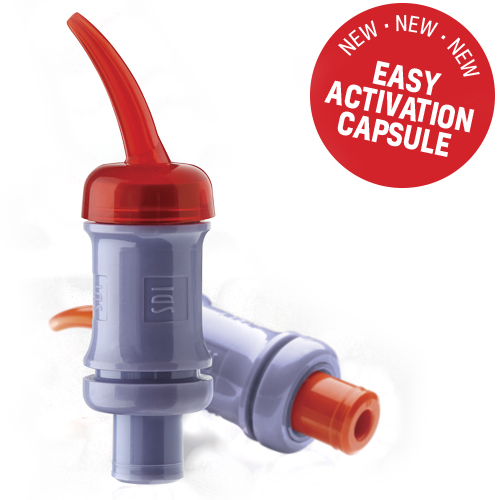
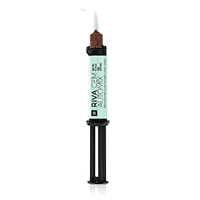
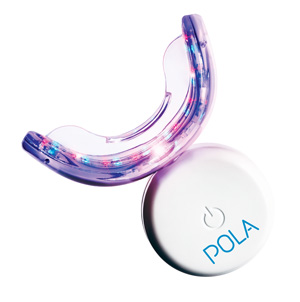
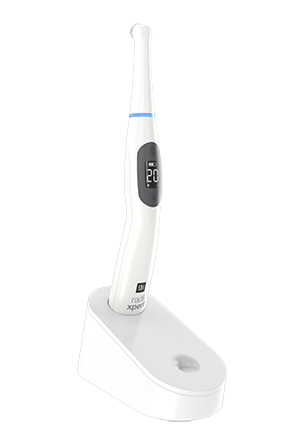
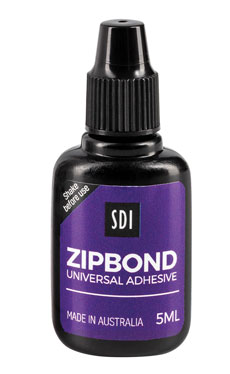


 New Zealand -
New Zealand - 
 United States -
United States -  Canada -
Canada -  Canada -
Canada -  Central/South America -
Central/South America -  Brazil -
Brazil - 
 United Kingdom -
United Kingdom -  Ireland -
Ireland -  Germany -
Germany -  France -
France -  Italy -
Italy -  Spain -
Spain -  Poland -
Poland -  Portugal -
Portugal -  Czech Republic -
Czech Republic -  Other European countries -
Other European countries - 


